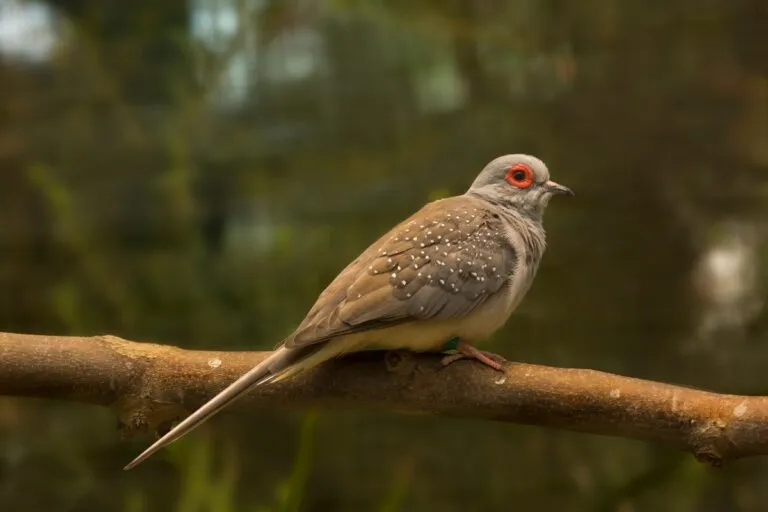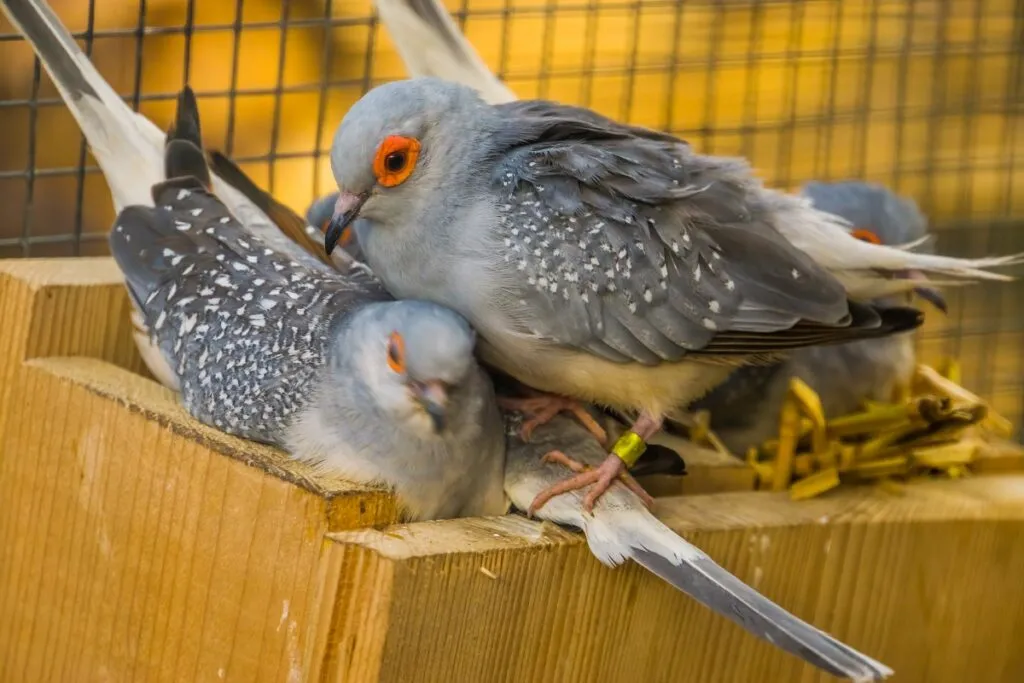Diamond doves are a favourite among bird keepers of small pigeons. The animals need a spacious aviary and daily free flight or their own bird room with a sleeping cage.
Are diamond doves hardy for winter?
Diamond doves are not very sensitive and can be kept outdoors all year round, provided they have access to a heated retreat.
The temperature inside their shelter should be at least 10 degrees Celsius.
How much space do diamond doves need?
Some countries prescribe a minimum size for enclosures. For example, Austrian animal husbandry regulations require a floor space of at least 1.6 square metres and a height of one metre for the keeping of small pigeons.
In the absence of legal regulations, the principle remains: the more space the doves have available, the better. These agile and proficient flyers desire to exhibit their natural behaviours even in human care.
Can diamond doves and budgerigars be kept together?
As mentioned earlier, diamond doves must be kept in pairs at the very least. If the aviary or bird room is sufficiently large, they can also be housed with other species like budgerigars.
In nature, diamond doves and budgerigars share a habitat – both are native to Australia. However, diamond doves need plenty of hiding and retreat spaces to move away from their feathered cohabitants when necessary.

